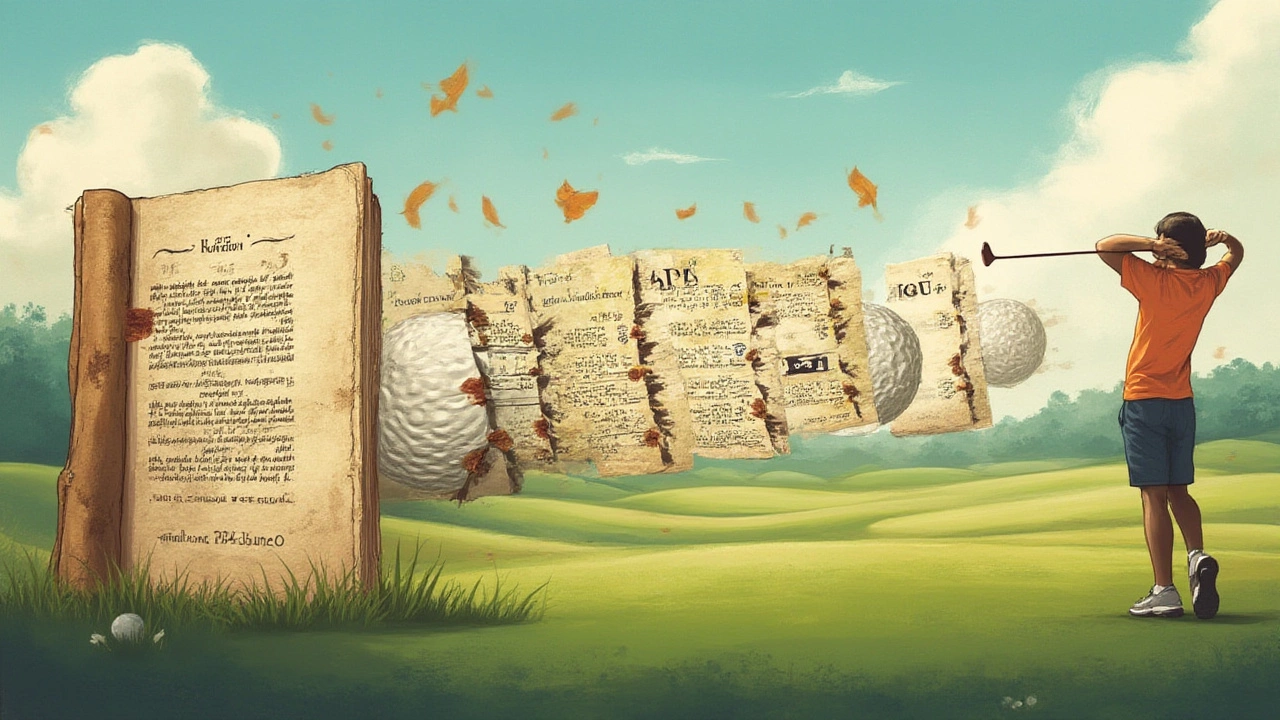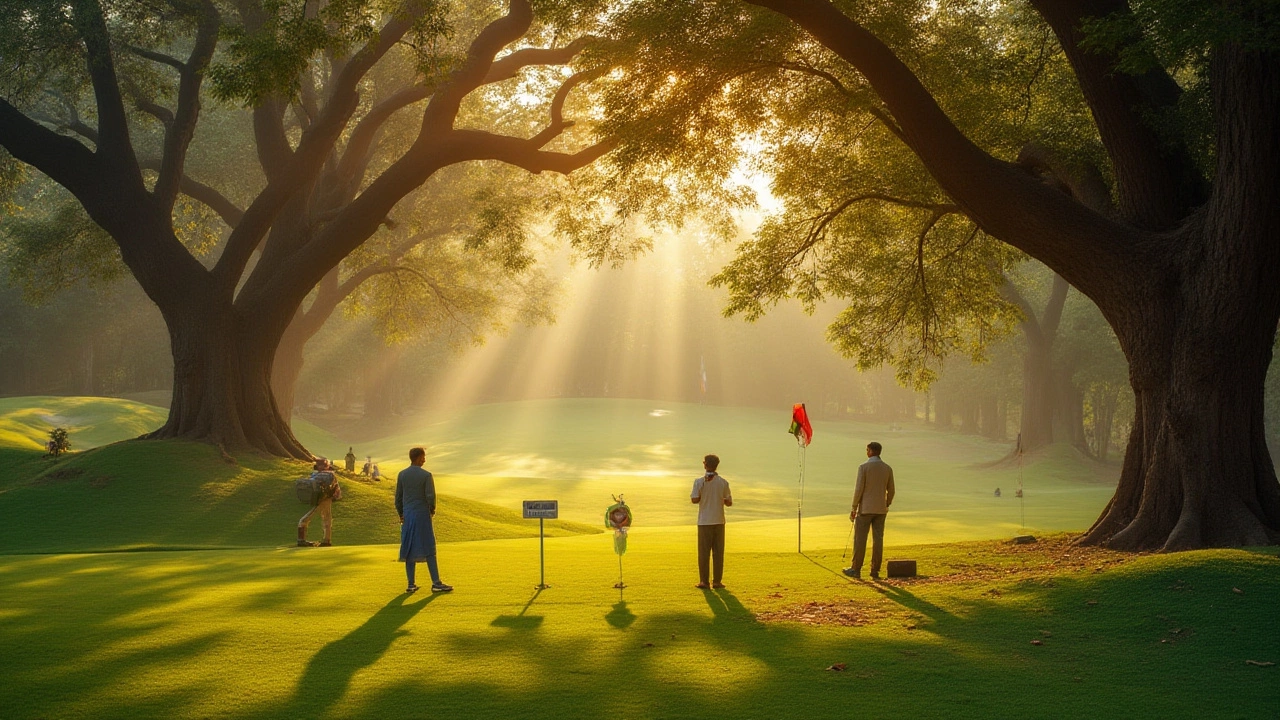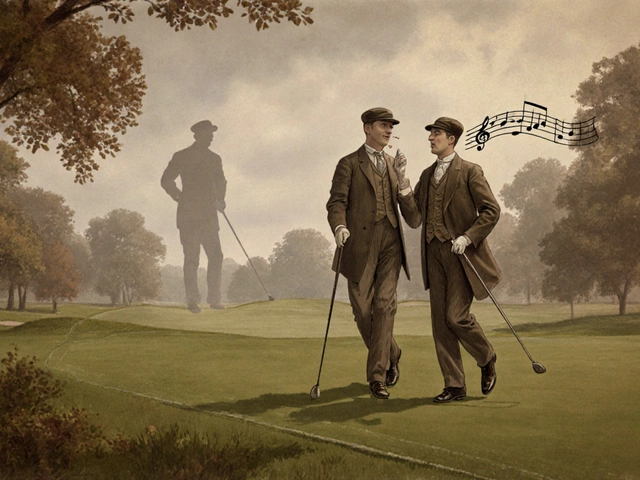You might think golf is just about hitting a small white ball across rolling greens, but the language of the sport is just as tricky as that monster sand trap on the 16th. Here's something almost every golf fan or newbie stumbles on: Why do we call it 'par'? The word pops up in almost every conversation about golf scores and tournaments, but its meaning, and the story behind it, holds a bigger punch than you might expect.
The Origins of 'Par': Not Just a Golf Thing
The word 'par' didn’t start in golf. It actually comes from the Latin word ‘par’ meaning ‘equal’ or ‘standard.’ For centuries, traders in London used 'par' when talking about the face value of stocks and bonds, as in 'on par.' The leap from the stock market floor to the rolling hills of Scotland was a quirky evolution. Early golf ran without formal scoring, mostly because scoring itself felt like an afterthought to the social and sometimes rowdy experience of a Sunday spent on the links. But as games became more formal and competitive, someone needed a benchmark: what should a player expect to score on a hole if everything went perfectly? That, right there, was 'par.'
Credit for making 'par' a household word in golf often goes to a Scotsman named George Peper, but the real roots trace further back. In 1866, a writer covering Prestwick's Open Championship used the word to describe what the ideal score for a perfect hole ought to be. Within a couple of decades, British golf clubs officially adopted 'par' as the mark of perfection—it combined the sense of fairness, challenge, and aspiration every golfer instinctively feels.
By 1911, the United States Golf Association put its stamp on it, publishing official par values for courses nationwide. That cemented 'par' into the language of golf. It’s funny, though: a century ago, telling someone they 'shot par' might have sounded like financial gibberish. Now it’s a matter of pride and sometimes agony for anyone who swings a club.
Want a stat to put this in perspective? According to the National Golf Foundation, about 90% of golfers never actually shoot par or better for an 18-hole round. So when you hear a pro finished a course 'at par,' you’re seeing someone who did what the originators of the game considered the perfect round.
The phrase isn’t limited to the main score of a round. It shows up in commentary (“She’s on track to finish at par!”), on scorecards (each hole’s par is usually printed next to its number), and in everyday language for things that are 'up to standard.' In golf, though, it’s not just a standard—it’s often a dream.

What Does Par Mean in Modern Golf?
If you’ve watched the Masters, the British Open, or even just a Sunday at your local club, you’ll see par listed for every hole. Typically, holes are rated as par-3, par-4, or par-5. What does this mean in real play? It’s the number of strokes an expert golfer is expected to need to finish the hole—counting tee shot, fairway swings, and two putts on the green. For a par-4, that’s one shot to the fairway, a second onto the green, and two putts to sink your ball.
Here’s where it gets nerdy (but in a cool way): establishing the par for each hole is kind of like a science. Course designers consider the length, the layout, changes in elevation, wind exposure, and even the way a green is sloped. There's no fixed worldwide standard, but the USGA offers some guidelines: for instance, a par-3 hole will usually be no longer than 260 yards, par-4 goes up to about 470, and par-5 holes can be as long as 600 yards (and some even longer!). Here’s a handy breakdown:
| Par | Typical Hole Length (Yards) | Expected Shots to Green | Expected Putts |
|---|---|---|---|
| 3 | Up to 260 | 1 | 2 |
| 4 | 240 - 490 | 2 | 2 |
| 5 | 450 - 710 | 3 | 2 |
Now, why all the fuss over two putts? For a long time, the expectation has been that a pro, once on the green, should finish the hole in just two putts. This keeps the pressure high but also attainable—try it yourself and you’ll see why even experienced players sweat over short putts.
But par is not set in stone. A course rating board re-evaluates par if tees move, hazards change, or if courses get lengthened due to improvements in player equipment (like when the golf ball and clubs became super high-tech in the late 20th century). In fact, the debate over how long holes should be leads to constant tweaks in top courses. Take Augusta National: the club has lengthened several holes multiple times to keep scoring tough but fair as pros hit longer drives every season.
For everyday golfers, shooting 'par' may sound like sci-fi. Most amateurs end up a good 20 strokes over par per round. But par remains the benchmark. When you’re picking clubs, aiming at flags, battling wind, or trying not to shank your chip into a bunker, that tiny number on the scorecard is what you measure yourself against.
Fresh tip: The next time you’re struggling on a hole, remember that par isn’t supposed to be 'average'—it’s designed for an expert playing at the top of their game. So give yourself a break if you’re not racking up a bunch of pars. Even Tiger Woods has days when par is out of reach!

Why 'Par' Still Matters: More Than Just a Number
'Par' keeps golf honest, challenging, and aspirational. Why do fans love following the cut and chase of a major championship? Because every golfer on TV is trying to keep up with, beat, or at least stay close to par in golf. The scoreboard doesn’t just track birdies (one lower than par), eagles (two lower), or bogeys (one higher)—it constantly orbits that idea of par. Move one stroke too many, and suddenly, drama appears.
The term also has this way of creeping into daily life. Ever heard someone say, “That’s below par” or “He was right on par today”? Golf’s influence goes beyond the green. The use in everyday language is a neat reminder of golf’s place in popular culture. But if you’re using 'below par' to mean 'not very good,' remember—in golf, being ‘under par’ is actually a great thing.
There’s an extra layer when you zoom in on major tournaments, especially those where players face tough pins, wicked rough, and oodles of pressure. In the 2019 U.S. Open at Pebble Beach, only a handful of players finished under par through four rounds. Pressure, weather, and layout can make par feel heroic. Even the world’s best sweat it. Data from the PGA Tour shows the average score on their toughest holes often runs over par—an 18-hole round for the pros might feature par-3s averaging 3.15 strokes, par-4s around 4.18, depending on the course.
Here’s a quirky tradition: on some ultra-difficult par-3 holes, tournament officials cheer more for a par than a birdie because the level of challenge makes par almost a small miracle. Even TV commentators get excited over a simple par save after a player dances through trouble.
For club players, there’s comfort in this: par can be a personal thing. Some groups establish their own 'handicap pars' and have bets going about who gets closest. The game is full of playful traditions around par, like buying drinks at the clubhouse if you score your first par or birdie of the round. Those little bets and rituals keep golf fun (and a bit unpredictable—after all, that’s part of the experience!).
Feeling motivated? Here are three simple ways to get closer to par yourself:
- Work on your short game—the biggest gains for amateurs come from improving chipping and putting skills.
- Play from the tees that suit your power and experience (forget macho myths—pros use the tees that fit their game, and you should too!).
- Track your stats and aim to beat your own 'personal par.' Success is about improvement, not perfection.
So next time you’re on the tee, looking down that ribbon of fairway, that little word—par—gives you something to aim for. It’s not just a number. It’s a reminder of golf’s roots, a measure of the course’s challenge, and a nudge to reach a standard that, frankly, isn’t meant to be easy. That’s why we all chase it.



